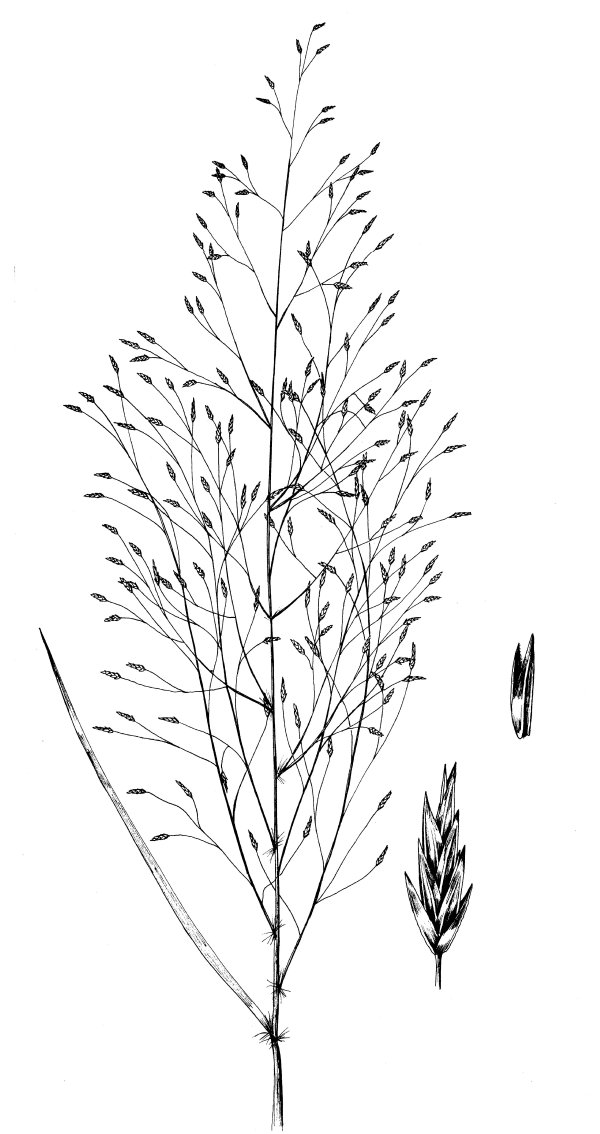
Eragrostis spectabilis (Pursh), Purple Lovegrass
Habit: Densely tufted perennial with short stout rhizomes. Culms: 20-60 cm. tall, stiffly erect to spreading, rigid, simple. Blades: 10-30 cm. long, 3-8 mm. wide, flat or folded, firm, stiffly ascending, glabrous or rarely pilose, often involute in drying. Sheaths: Overlapping, glabrous or sparingly pilose, densely bearded at the throat. Ligule: Ring of hairs 2-4 mm. long. Inflorescence: Panicle 15-60 cm. long, loosely flowered, two thirds the height of the plant, widely diffuse, reddish-purple, included at the base or exserted after the upper spikelets have fallen, branches ascending, spreading, pilose in the axils, the lower branches shorter than the middle ones, finally reflexed, the panicle finally breaking loose as a tumbleweed. Spikelets: Long or short, stiff pediceled, linear-oblong, purplish, 4-12-flowered, 4-8 mm. long, 1.5-2 mm. wide, numerous. Glumes: 2, about equal, about 1.5 mm. long, ovate, acute, minutely scabrous, especially on the keel. Lemmas: Acute, 1.5-2 mm. long, prominently 3-nerved, usually broad, slightly scabrous towards the tip. Palea: Nearly as long as its lemma, somewhat bowed out, exposing the rather prominent short ciliate keels. Fruit: Grain oval, dark brown, 0.6 mm. long. Habitat: Dry or sandy soil. August-September. Kansas Range: Mostly east two thirds. Synonyms: Eragrostis spectabilis (Pursh) Steud. var. sparsihirsuta Farw.